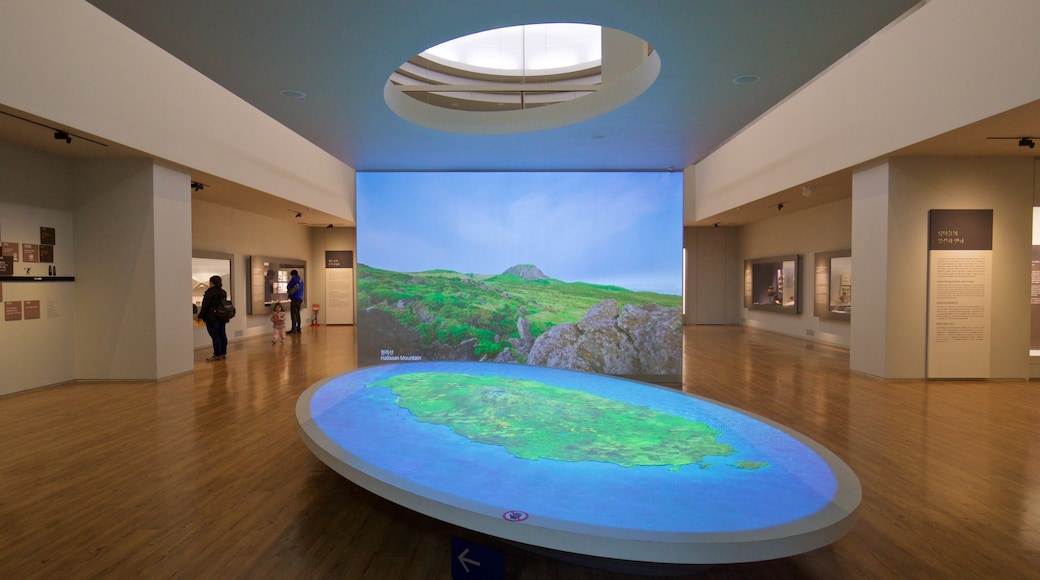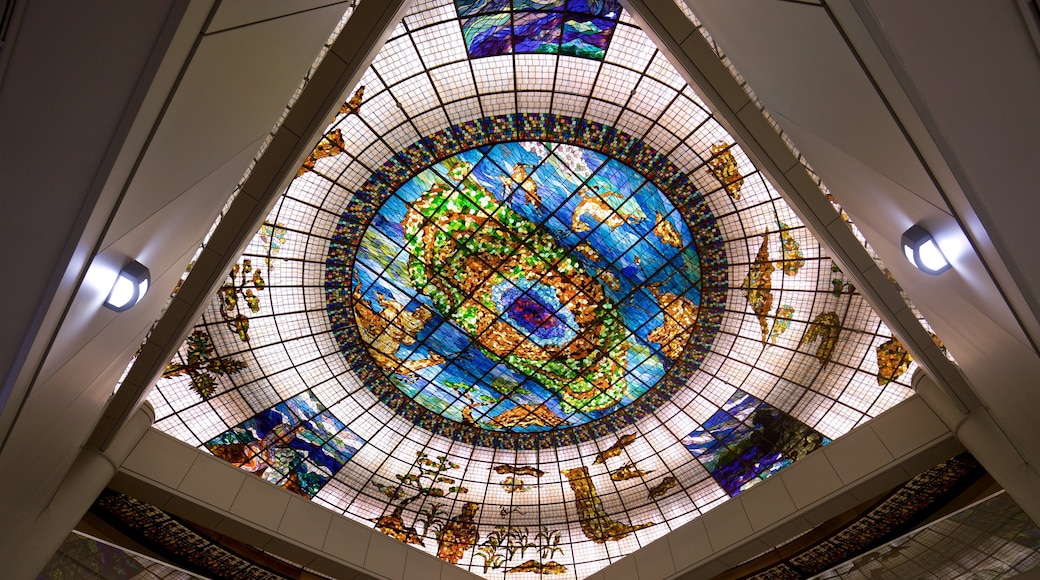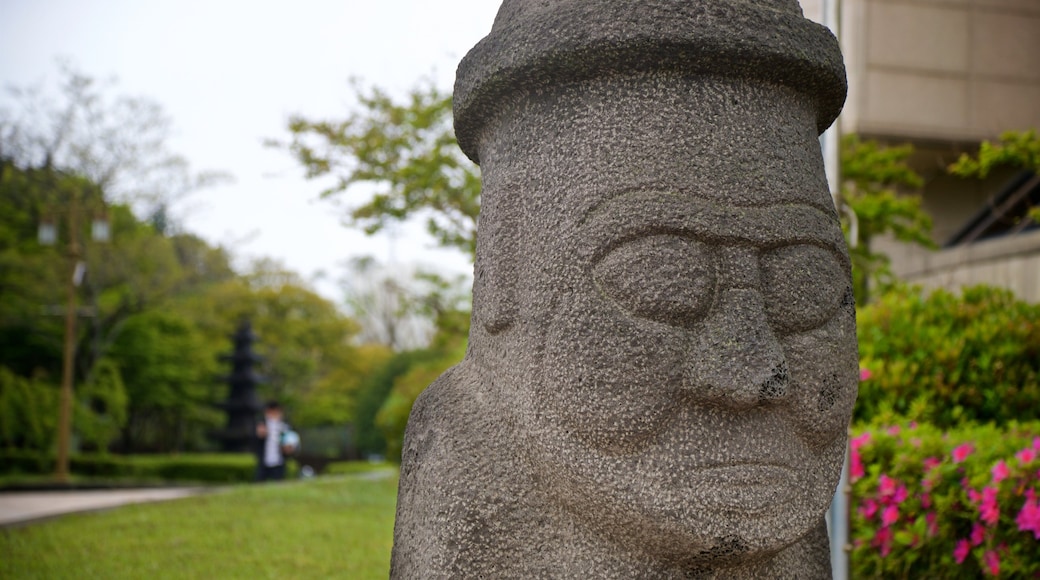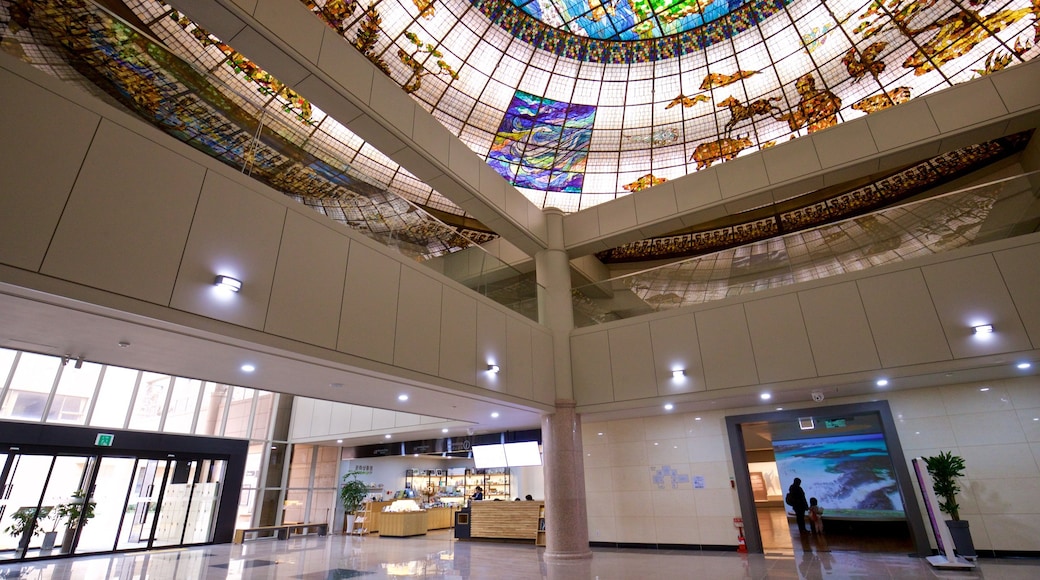Jeju National Museum strives to preserve and promote the cultural identity of Jeju Island. Learn about the island’s existence and evolution from prehistoric times to the present day via chronological displays. Discover archaeological remains, watch multimedia presentations and admire artistic treasures. Take part in hands-on classes and attend performing arts events.
A diorama of Jeju-eupseong Fortress welcomes you to the museum’s central hall. Look up to see a stained-glass dome, which depicts a myth about the three gods that first inhabited the island and established the kingdom of Tamna (modern-day Jeju). Study examples of the lifestyles and tools of the island’s hunter-gatherer Paleolithic and Neolithic people in Tamna Period Gallery.
The Goryeo Period Gallery explores the growth of the island during the Bronze Age through interactions with the kingdoms of the Korean peninsula. Retrace events that saw the island ruled by the Joseon Dynasty before becoming a province of Korea. Other exhibits highlight how the people of Jeju developed a fishing and maritime industry and offers a glimpse into their spiritual beliefs.
In the interactive area, discover arts and crafts typical of Jeju islanders. Try stone rubbing and woodblock printing and attempt to create a painting puzzle. An outdoor exhibition features archaeological objects set around a garden. See statues of mythological figures, such as the dolhareubang (grandfather rock), a burial mound and a pagoda.
Check the museum’s official website for information about regular events. Among these are concerts, plays, lectures and movie screenings. Enjoy the chance to play traditional Korean games during celebrations held on September’s Chuseok (Autumn Eve) and New Year’s Day.
You’ll find the museum at the edge of Sarabong Park, in the Geonip-dong neighborhood of Jeju City. Several public bus lines connect the attraction with the city center.
Jeju National Museum is open from Tuesday to Sunday and last admission is 1 hour prior to closing. It’s free to visit all of the museum’s exhibitions. The majority of the displays have explanations in English.
















